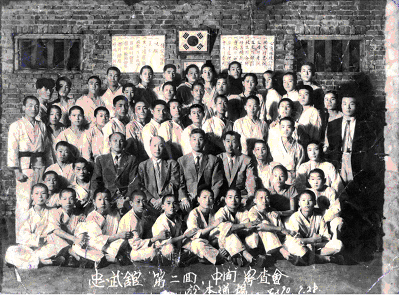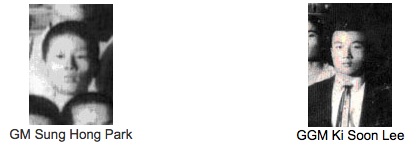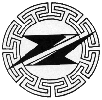Hapkido is a very diverse and physically demanding discipline.
This art features an action based philosophy of Circular Motion, Fluid Motion and Harmony of Motion.
It’s broad curricula (summarized below) designates it as one of the worlds most comprehensive styles of martial arts and martial sciences.
- Striking, punching techniques
- Kicking and sweeping techniques
- Avoiding, redirecting and blocking techniques
- Holding or grabbing techniques
- Grappling
- Throwing techniques
- Weapons techniques
- Internal techniques
- Healing techniques
Our Hapkido History
Our Hapkido is very distinct from most known Hapkido systems. Most Hapkido systems originate from Grandmaster Choi, Yong Sul but ours does not.
Our founder, Grand Master Sung Hong Park, learned the art of Hapkido under his teacher Ki Soon Lee (see pictures/story below).
Many of the details associated with Great Grand Master (GGM) Lee’s life have been difficult to come by. As you read further you will come to understand why. (Note: We have attached the title of “Great Grand Master” to Ki Soon Lee’s name out of deep respect and reverence. It does not accurately reflect his title during the period of time discussed herein.)
GGM Lee began teaching in Seoul Korea soon after Japanese left in 1945. Unfortunately we do not know Lee’s exact teacher (but we are continuing our research to this day). GM Park believed that GGM Lee was chosen among other children only after long observation and a thorough character evaluation. This was most likely performed without GGM Lee’s knowledge.
Instead of perpetuating the approach of one teacher to one or a few pupils, as GM Lee was taught, Lee was compelled, (or possibly directed by his teacher), to open his art to the general public through a dojang (training gym).
But GGM Lee’s style of martial arts had no formal name. (Note: GM Park said that the lack of a systems name was an understandable characteristic back then.) So, in order to grow and promote the art GGM Lee needed to come up with one. After due consideration he finally decided on a term that he heard called “Hapkido”. He felt this word best expressed his art form. GGM Lee’s intentions in using this name were honorable, and unlike modern times there were no copy write or trademark considerations to account for with a martial arts system and or name.

-
GGM Lee is to the far right wearing a black suit. GM Park is a young man in this picture and is located in the next to last row towards the back. He is slightly to the left of the Korean flag. The officials are in the gray suits seated. The second gentleman to the left (balding hair) is a very high Korean official (equivalent to the Secretary of State) who had come to this province to recruit assistance in strengthening Korea. Next to him (to his immediate left) is the equivalent of the provinces Mayor.

After the Japanese’s left the occupation of Korea the Korean nation had a great need to strengthen itself internally. So eventually GGM Lee was visited by several important Korean officials with just this purpose in mind (see photo above).
These provisional government officials approached GGM Lee to establish community leaders from his martial arts student base.
GGM Lee’s & GM Park’s Story
GM Park started his studies under GGM Lee at the approximate age of 11 years old. He continued training uninterrupted until he was called to the mandatory Korean military service for 3 years.
While GM Park was in the military there was no contact with GGM Lee. It was sometime during this period that GGM Lee abandoned martial arts for good.
GM Park tells us that GGM Lee lost several of his most senior students within a short period of time due to mandatory military service. GM Park was one of the 5 highest ranked seniors.
Apparently, GGM Lee had difficulty retaining students due to the extreme severity of his training. We are told that many times his students would leave crying and later their parents would come to inquire about it. GGM Lee would firmly and frankly explain that true martial arts training was difficult and if a child was too weak to train correctly then he had no reservations about dismissing them.
Needless to say this was not a popular position to take, and in modern terms far from being politically correct, but the times were hard and GGM Lee remained resolute in his convictions and teaching methodology.
When GM Park was decommissioned from service, he went back to GGM Lee’s dojang to continue his studies only to discover that he was no longer there. After asking several people what happened he was told that GGM Lee had given up martial arts and opened a jewelry shop down the street.
GM Park was shocked and confused upon hearing this news. That a martial arts Master of GGM Lee’s caliber would abandon martial arts was very hard to imagine. Yet to abandon it and become a jewelry shop merchant was beyond belief (verging on insult in that day and time).
So, GM Park decided to approach GGM Lee at his jewelry shop. Upon entering the shop GM Park respectfully greeted him as was customary. But GGM Lee refused to acknowledge GM Park on a personal level and even though GM Park knows that he was recognized, GGM Lee only offered to sell GM Park jewelry.
Since GM Park couldn’t gain any information from GGM Lee he left stunned and very confused. So GM Park proceeded to investigate what actually happened to GGM Lee by speaking with various persons.(Note: Only years later, with the advent of wisdom gained through experience and time, did he admit to understanding why GGM Lee acted the way he did.)
It seems that many, if not most, of the martial arts schools were too concerned with growth at the expense of compromising technique and self integrity.
GGM Lee was disgusted that the Korean people as a whole, along with some of his students, were being swayed to join other watered-down martial arts schools. In short, these schools would sell or promote undeserving people to higher ranks, etc.
The crescendo of the dishonorable schools influence reached a breaking-point in GGM Lee while GM Park was doing his mandatory military service.
The story goes that GGM Lee’s student base had weakened and in order to make amendment he developed the only plan of defense he could think of. GGM Lee posted a physical challenge to all the areas martial arts school “masters”. This challenge would be the equivalent of a front page ad in the USA Washington Post to meet on the Capital Plaza for a fighting match.
When the fight day arrived GGM Lee showed up but no other Master did.
To make maters worse the gathered people ridiculed GGM Lee and he was more or less looked upon as foolish after that day.
As an honorable man GGM Lee vowed at that time to abandon the martial arts for good and to let the people have the watered-down versions they wanted. He was fed up and done with them all.
Grand Master Park‘s Hapkido
The sadness of GGM Lee’s situation was terrible but GM Park was determined to continue his training in Hapkido.
While in the military GM Park had meant another Hapkidoist, (in particular a student who studied under Grandmaster Choi, Yong Sul’s Hapkido system). This colleague was able to arrange a review board to evaluate GM Park’s ranking and status based on his known “Hapkido” techniques and knowledge.
It should be noted here that when GM Park went into the military he was only a second dan black belt under GGM Lee. Yet after this review boards testing he was promoted to a 5th dan due to the advanced level of GGM Lee’s techniques/teachings. It is unlikely that GM Park was promoted to said rank due to any political or monetary gain as was common among many of the watered-down school practices.

GM Park received his
7th dan in the Korean Ki Do Association,
(http://www.kidohae.or.kr/),
on March 15, 1979.
Once Master Park immigrated to the USA in 1979 he decided not to pursue further ranking under Grandmaster Choi, Yong Sul’s Hapkido or the Korean Ki Do Association. This decision was apparently based on his belief that neither system’s were sufficient in technique and knowledge to provide him with continuing education and ranking.
 Grand Master Lee is the third person from the right wearing the dark suits. Master Park is the first student to the immediate left of the dark suited man furthest on the right, as you look at the picture.
Grand Master Lee is the third person from the right wearing the dark suits. Master Park is the first student to the immediate left of the dark suited man furthest on the right, as you look at the picture.

Notation of Interest:
Master Park claims that GGM Lee was the best martial arts Master he has ever known. One story in particular which caught our attention many years ago was this. GGM Lee carried a rock in his hands no matter where he went. He would constantly squeeze and strike the rock as a hand conditioning discipline. His hands became so strong through this practice that he could catch a punch, squeeze and break the metacarpal bones of the fist.